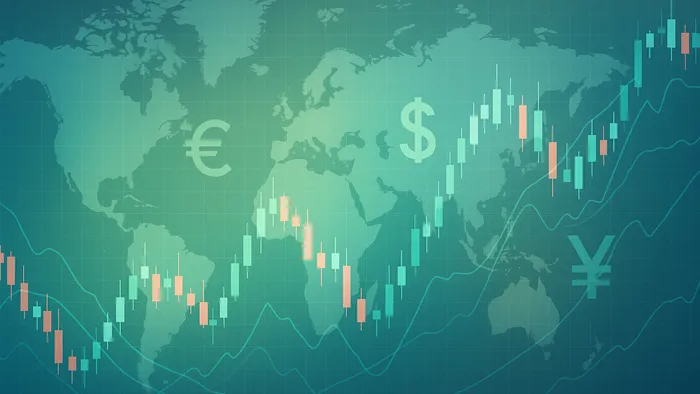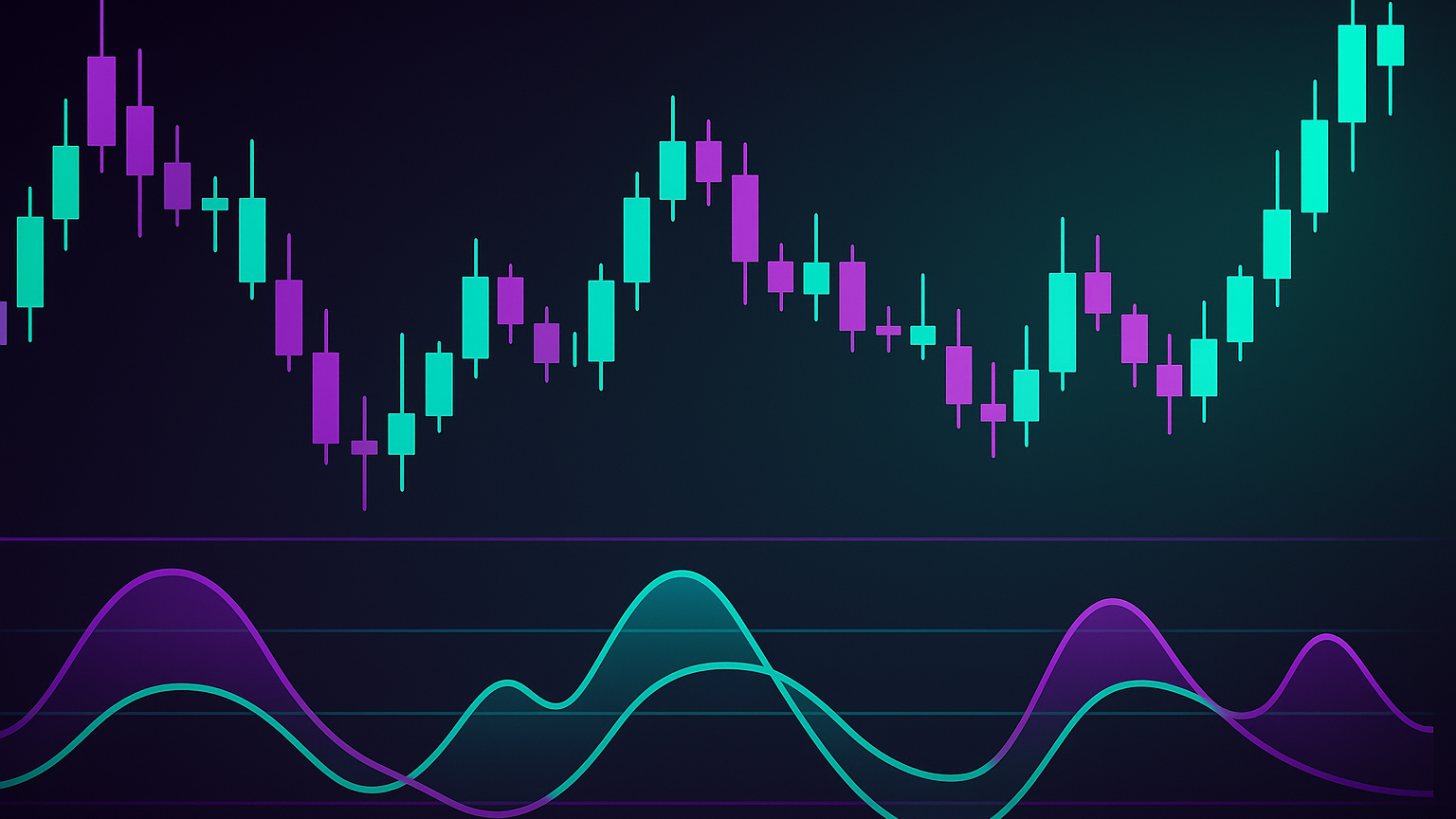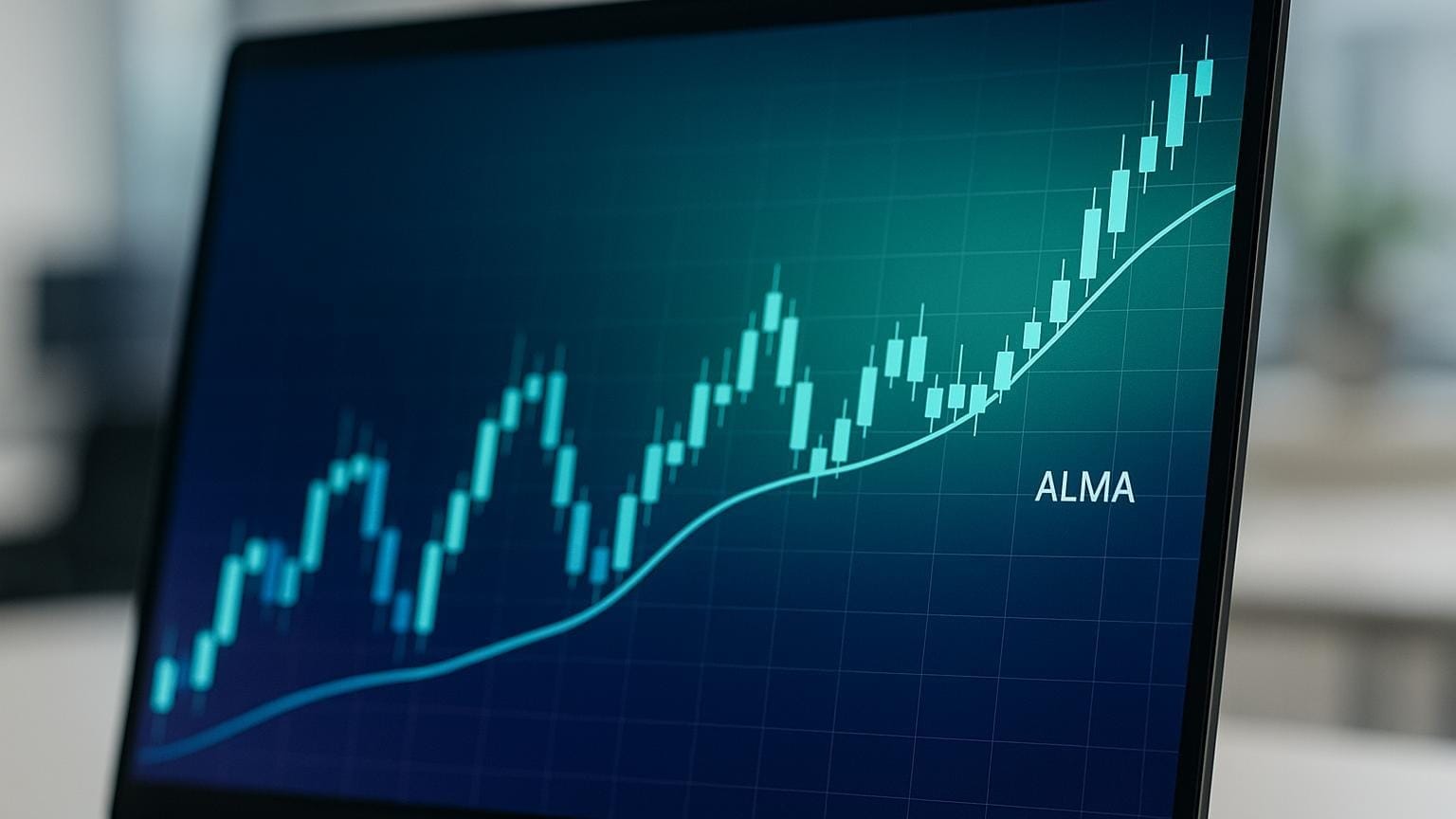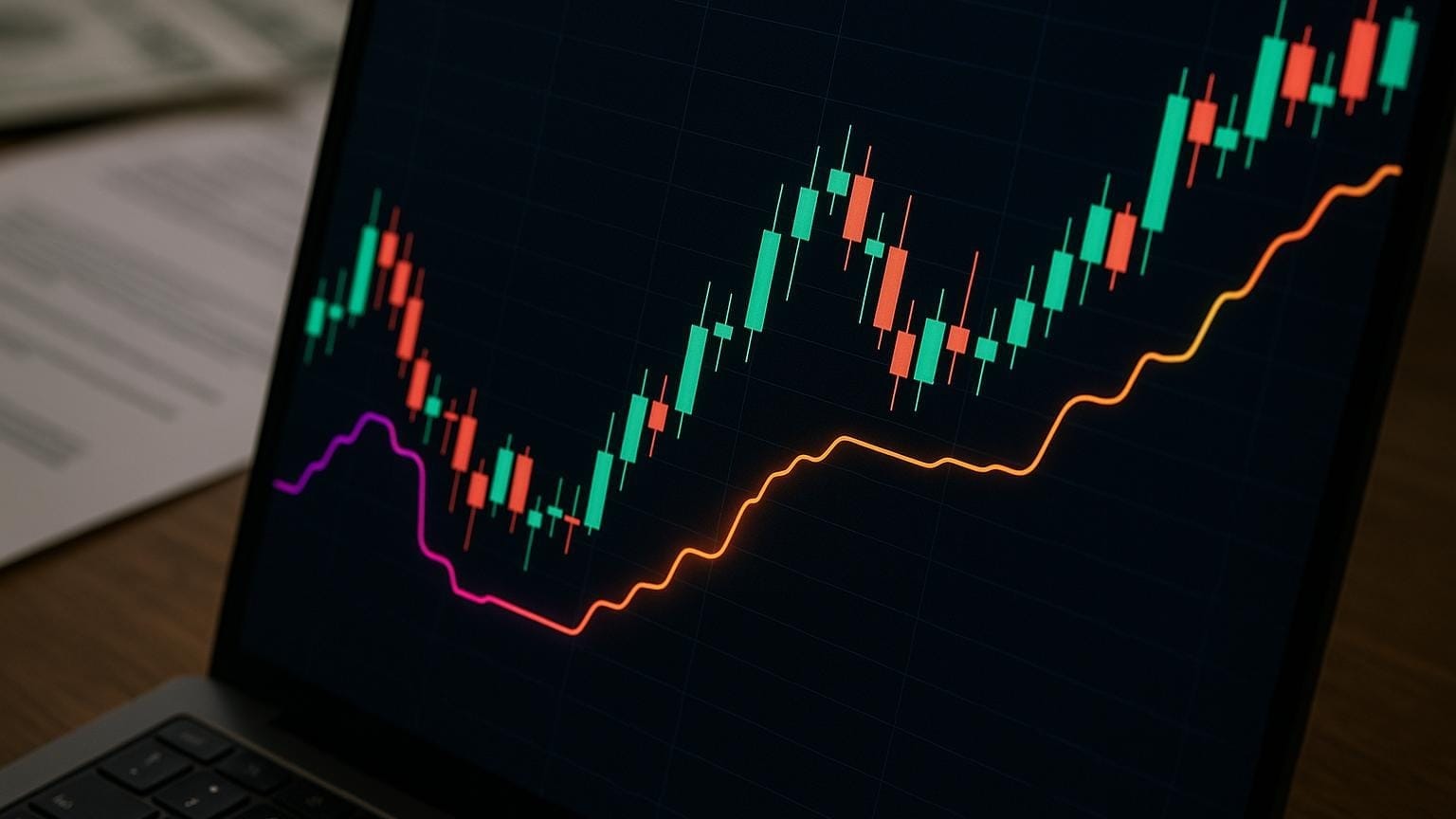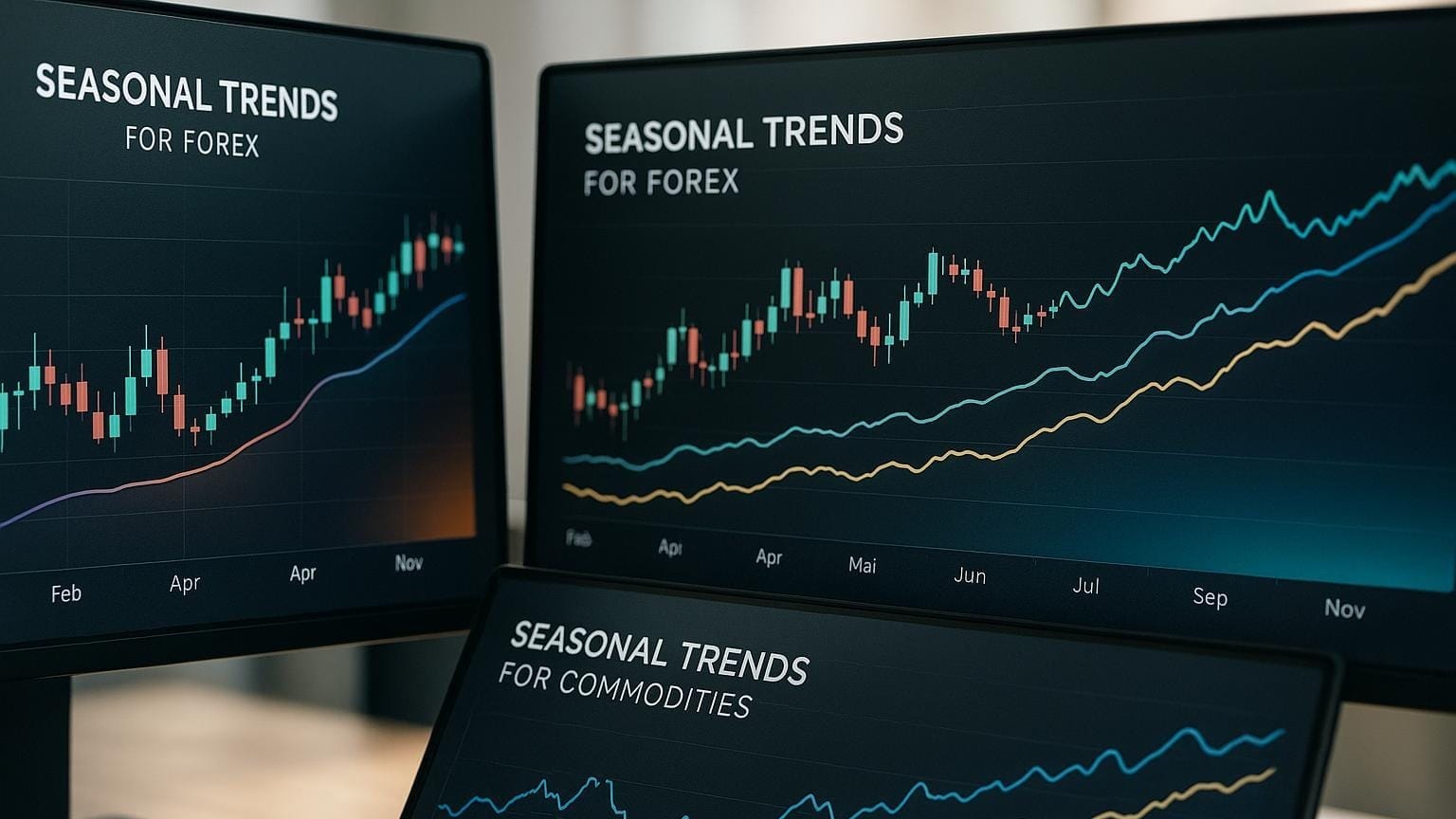Learn the essentials of forex trading, including currency pairs, market mechanics, and risk management strategies for beginners.
Forex trading is the world’s largest financial market, with over $7.5 trillion traded daily. It allows you to exchange one currency for another in a decentralized market that operates 24/5. Whether you're a retail trader or a corporation managing international transactions, understanding the basics is key to success.
Key Takeaways:
- What is Forex? Trading currency pairs like EUR/USD, where you buy one currency and sell another.
- Market Size: $7.5 trillion daily volume, far exceeding equities markets.
- Who Trades? Central banks, commercial banks, investment funds, corporations, and retail traders.
- Benefits: High liquidity, 24/5 trading, low barriers to entry, and leverage options.
- Risks: Leverage and volatility can amplify losses; risk management is essential.
Forex trading is accessible to anyone with a laptop or smartphone, but success requires preparation. Start by learning about currency pairs, trading methods, and risk management, and practice using a demo account before diving in.
Related video from YouTube
Currency Pairs and Price Basics
To trade forex effectively, you need to grasp how currency pairs work. Each pair reflects the relationship between two currencies and serves as the foundation for all forex trades.
Reading Currency Pairs
Currency pairs are made up of two parts: the base currency (listed first) and the quote currency (listed second). For example, in EUR/USD, the euro (EUR) is the base currency, and the US dollar (USD) is the quote currency. The price shows how much of the quote currency is needed to buy one unit of the base currency.
"A currency pair involves two different currencies, often separated by a forward slash ('/'), in which the value of the first currency is quoted against the value of the second currency." – Blueberry Markets
When looking at forex quotes, you'll see two prices:
- Bid price: The price at which you can sell the base currency.
- Ask price: The price at which you can buy the base currency.
For example, if EUR/USD is quoted as 1.3600/05, the bid price is 1.3600, and the ask price is 1.3605. The difference between these prices is the spread, which represents the broker's fee.
Types of Currency Pairs
Currency pairs fall into three main categories:
| Category | Description | Popular Examples | Spread Characteristics |
|---|---|---|---|
| Major Pairs | Include the USD and are the most traded pairs | EUR/USD, USD/JPY | Tightest spreads |
| Minor Pairs | Major currencies paired without the USD | EUR/GBP, GBP/JPY | Moderate spreads |
| Exotic Pairs | Combine a major currency with an emerging market | USD/TRY, USD/SGD | Widest spreads |
The USD dominates forex trading, involved in 88.5% of transactions. The Euro and Japanese Yen follow, accounting for 30.5% and 16.7% of transactions, respectively, as of 2022. These categories are key to understanding lot sizes and leverage in forex trading.
Trading Units and Leverage
Forex trading revolves around three main lot sizes:
- Standard Lots: 100,000 units of the base currency.
- Mini Lots: 10,000 units.
- Micro Lots: 1,000 units.
A pip is the smallest price movement in forex. For most currency pairs, a pip is the fourth decimal place. For instance, if EUR/USD moves from 1.3600 to 1.3601, that’s a one-pip change.
Leverage allows traders to control larger positions with less capital. While it can amplify profits, it also increases potential losses. Choose leverage ratios carefully, considering your risk tolerance. Exotic pairs, in particular, demand caution due to their higher volatility and wider spreads. Using stop-loss orders can help manage risks when trading these pairs.
Forex Trading Mechanics

With over $7.5 trillion traded daily, understanding how to execute trades effectively is crucial.
Making a Forex Trade
Placing a forex trade involves several important steps. Your order goes through a network of liquidity providers—typically large investment banks that handle currency exchanges.
Here’s a quick breakdown of how a forex trade works:
-
Trade Initiation
Your broker processes your order and sends it to liquidity providers offering competitive prices. -
Order Processing
The broker’s ECN (Electronic Communication Network) system connects with these providers to secure the best available pricing. -
Trade Execution
Orders are executed based on the selected execution type:- Instant Execution: Trades happen at the current price, though re-quotes might occur.
- Market Execution: Trades occur at the best available price, but slippage is possible.
"Execution involves not just the act of buying or selling, but doing so with good timing and accuracy." – Phantom Trading
Order Types in Forex
Knowing how and when to use different order types is key to managing trades and minimizing risk. Here are the main types:
| Order Type | Purpose | Best Used When |
|---|---|---|
| Market Order | Execute immediately at the best price | You need quick entry or exit |
| Limit Order | Buy below or sell above the market price | You want to control the exact price |
| Stop Order | Buy above or sell below the market price | You’re looking for trend confirmation |
| Stop Loss | Automatically exit losing positions | You want to manage risk effectively |
| Trailing Stop | Adjusts with price movements to lock gains | You’re protecting profits during trends |
"Think of a limit price as a price guarantee." – BabyPips
Trading Sessions and Times
The forex market runs 24/5, divided into global trading sessions. Each session has unique characteristics that can affect your trading strategy.
| Trading Session | Major Markets | Peak Activity (UTC) | Characteristics |
|---|---|---|---|
| Asian | Tokyo, Sydney | 23:00–08:00 | Lower volatility |
| European | London, Frankfurt | 07:00–16:00 | High liquidity |
| North American | New York | 12:00–21:00 | High volatility |
The overlap between the North American and European sessions is particularly active, accounting for nearly 58% of all forex trades.
Basic Trading Methods
To trade forex effectively, beginners need a clear and structured approach. Understanding the basics of market analysis and trading techniques is key.
Market Analysis Methods
Forex trading relies on two main analysis methods: fundamental and technical.
| Analysis Type | Focus Area | Tools Used | Purpose |
|---|---|---|---|
| Fundamental Analysis | Economic factors | Economic calendars, news, indicators | Identifying long-term trends |
| Technical Analysis | Price movements | Charts, indicators, volume | Timing entry and exit points |
Fundamental analysis involves keeping an eye on economic events and trends. Use economic calendars to track releases, compare actual data with market expectations, and monitor central bank decisions.
Technical analysis focuses on price patterns and charts. As BabyPips explains, “Technical analysis is NOT so much about prediction as it is about POSSIBILITY.” It helps traders find ideal entry and exit points based on historical price behavior.
Beginner Trading Techniques
For new traders, starting with straightforward strategies is a smart move. A great example is a EUR/USD breakout strategy. In one case, traders shorted the pair after a breakout at the 1.1772 support level, earning a 70‑pip profit when the price dropped to 1.1700.
"Focus on one or two strategies at a time. That way, you can use the rest of your time and energy working on your patience and discipline." – Justin Bennett
Managing Trading Risk
Risk management is the backbone of successful forex trading. To protect your capital and improve your chances of success, follow these practices:
-
Position Sizing
Keep your risk per trade to 2% of your account value. Calculate the correct lot size based on your stop‑loss distance. -
Stop‑Loss Orders
Always use stop‑loss orders to limit potential losses. Aim for at least a 2:1 reward‑to‑risk ratio and consider trailing stops to lock in profits.
"Risk is inherent in every trade you take, but as long as you can measure the risk you can manage it." – Investopedia
Starting Forex Trading
To start trading forex, you'll need to pick a broker, select the right trading platform, and create a solid trading plan.
Selecting a Forex Broker
Picking the right broker can make or break your trading experience. Focus on factors like regulation, costs, platform options, and customer support when making your choice.
| Broker Type | Characteristics | Best For |
|---|---|---|
| Dealing Desk (DD) | Fixed spreads, but may involve a conflict of interest | New traders who prefer predictable fees |
| ECN | Direct access to the market, tight spreads, higher commissions | Experienced traders aiming for precise execution |
| STP | Access to liquidity providers, balanced fees | Intermediate traders seeking a mix of features |
Top brokers like IG Markets, OANDA, and Forex.com offer demo accounts with virtual funds, allowing you to practice without financial risk. Always verify that your broker is regulated (e.g., by the FCA or SEC) to ensure your funds are safe.
Trading Software Guide
Your trading platform is your gateway to the forex market. Tools like MetaTrader 4 (MT4) are widely used for forex trading, while MetaTrader 5 (MT5) adds support for stocks and commodities. TradingView is another popular choice, known for its social trading features and compatibility with the LuxAlgo Library indicators, exclusive toolkits (Signals & Overlays, Price Action Concepts, Oscillator Matrix), and the AI Backtesting Assistant.
Look for platforms that provide:
- Real-time price charts and analysis tools
- Mobile trading functionality
- Fast and reliable execution
- Strong security features
- Integration with third-party tools
Creating a Trading Plan
With your broker and platform ready, the next step is crafting a detailed trading plan. This plan will help you make informed decisions and reduce emotional trading.
-
Choose Your Trading Style
Decide between scalping, day trading, or swing trading based on your available time and capital. -
Set Clear Objectives
Define measurable goals for both short-term (daily or weekly) and long-term (monthly or yearly) trading. -
Establish Risk Rules
Determine your position sizes, limit risk to no more than 2% per trade, and set daily loss limits.
Conclusion
The forex market stands as the largest financial market globally, with a staggering daily trading volume of over $7.5 trillion. Understanding its core principles is essential for anyone aiming to succeed in this space.
Key Concepts to Remember
Here’s a quick recap of the most important aspects:
| Trading Aspect | Key Points |
|---|---|
| Market Structure | Operates as a decentralized, over-the-counter (OTC) market, open 24/5. |
| Risk Management | Includes position sizing, stop‑loss orders, and managing leverage. |
| Analysis Methods | Covers technical, fundamental, and sentiment analysis approaches. |
| Trading Tools | Involves choosing the right platform, using demo accounts, and risk tools. |


